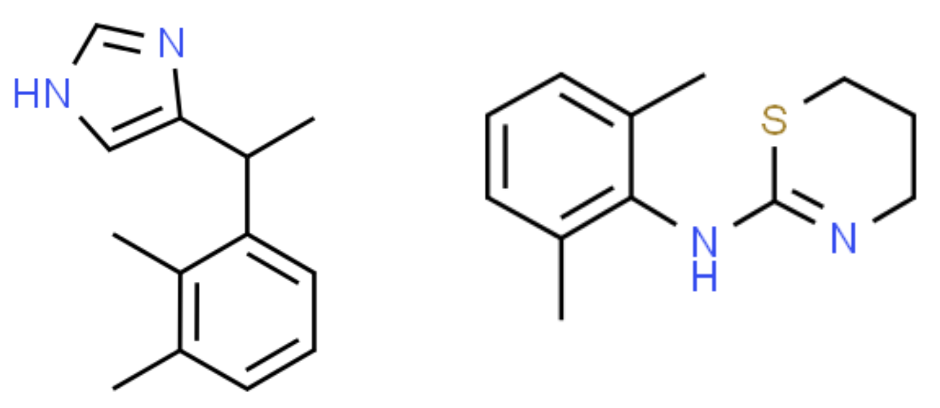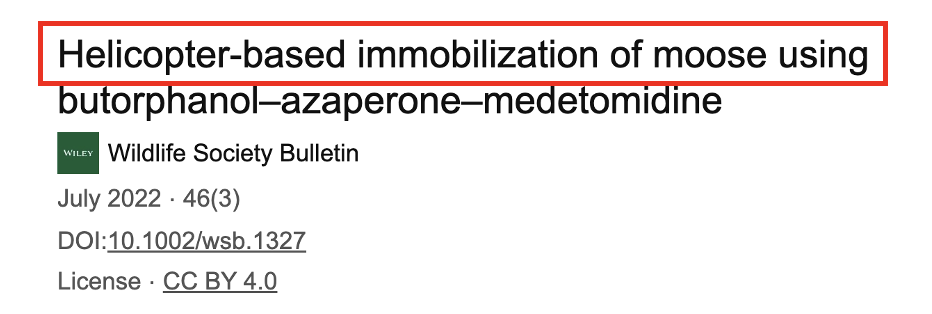
For anyone with the intellectual capacity of a turnip, it should be more than obvious that the "iron law of prohibition," something Dr. Jeff Singer and I have written about numerous times (see here, here, and here), is alive and well. The concept is both simple and obvious: stricter enforcement of drugs of abuse is all but guaranteed to result in more potent and dangerous drugs. The ridiculous crackdown on (much safer) prescription opioids resulted in a surge in (more dangerous) heroin use, and the subsequent flooding of the US by (much more dangerous) illicit fentanyl – still the primary killer by far.
But we're not done. Attempts to rein in illicit fentanyl or control the chemicals used to synthesize it resulted in even more dangerous drugs, for example, fluorofentanyl, xylazine, nitazenes, and U-47700. Predictably, there's a new kid on the block called medetomidine. How much harm will it do to drug users? Hard to say because the drug is not (yet) widely used to spike other drugs, especially fentanyl (1). But there are some clues from veterinary medicine, where it is routinely used as a general anesthetic.
Medetomidine – Xylazine on steroids

Figure 1. The chemical structures of medetomidine (left) and xylazine (right). To the untrained eye, these may look rather different but to a chemist there are some subtle similarities.
Is there an expression "different horse of the same color?" It sort of fits the comparison between the two drugs. As you will see later, medetomidine is much more potent than xylazine. But let's stick with the animal motif for a bit. I found the following journal article to be hilariously informative.

Yes, there is an actual paper about air-lifting a moose that was knocked out with medetomidine and two other drugs. But even more exciting...
My first use of GPT 4.0!!!!
ACSH finally broke down and upgraded to GPT 4.0o, which can draw photos. Amazing! I asked it to draw a dumb moose hanging by a rope from a helicopter and...

(Left) ACSH enters the 21st century! AI-generated drawing. Woo hoo! (Right) The same image using our previous "technology."
Medetomidine vs. xylazine
Medetomidine and xylazine are quite similar but have some differences. Both drugs are alpha-2 adrenergic agonists, (2) which are used for sedation, analgesia, and muscle relaxation, primarily in veterinary medicine (3). Here are some differences:
- Medetomidine is stronger and longer-lasting (sedation and pain) compared to xylazine
- Xylazine is less effective and less potent
- Medetomidine causes more cardiovascular depression
- Xylazine also causes cardiovascular depression but to a lesser extent
The key message here is potency, which is why it is an unwelcome guest in our fentanyl supply. How big is the difference? Pretty big.
- The effective dose of medetomidine is 5-10 micrograms per kilogram (mpk) body weight of the animal.
- By contrast, the effective dose of xylazine is about 0.5 to 1 mpk.
- This makes medetomidine 100 times more potent than xylazine.
- This number may be understated. A paper in the Journal of Ocular Pharmacology and Therapeutics reports that the difference in sedation and anesthesia is 200-fold.
Will medetomidine become a big problem?
Impossible to say, but there are some disturbing signals. The drug has made inroads, notably in Canada and Pennsylvania; The Pennsylvania-based Center for Forensic Science and Education issued a public alert today.
Medetomidine is the latest CNS depressant to appear as an adulterant alongside fentanyl in the recreational drug supply. Recent mass overdose outbreaks in Philadelphia, Pittsburgh, and Chicago have all been associated with fentanyl or heroin drug products containing medetomidine, as well xylazine and/or other substances. In cases where medetomidine ingestion is suspected or confirmed, severe adverse effects have been noted, including heightened sedation and profound bradycardia.
And the Toronto Drug Checking Service issued the following notice in early 2024:
[Medetomidine] was found in samples [of] fentanyl, [and] other high-potency opioids, like fentanyl, fluorofentanyl, and/or a methylfentanyl-related drug, as well as other central nervous system depressants... Much like xylazine and benzodiazepine-related drugs, we suspect medetomidine/dexmedetomidine is being added to unregulated fentanyl to mimic or enhance the sedative and euphoric effects of the opioid a person is choosing to use.
Another day another more dangerous street drug in an unwinnable war. Why do I get the feeling that I'll be writing a similar article before long?
NOTES:
(1) As if illicit fentanyl isn't bad enough chemists working for cartels continuously experiment with additives to "improve" the properties of the fentanyl.
(2) An alpha-2 agonist is a drug that activates alpha-2 adrenergic receptors in the central nervous system, leading to decreased norepinephrine release. This results in sedation, analgesia, muscle relaxation, and reduced blood pressure and heart rate.
(3) Although primarily a veterinary drug, dexmedetomidine the active enantiomer in medetomidine called Dexdor is approved for human use as a sedative. And the FDA recently approved Iglami (sublingual dexmedetomidine) for acute treatment of agitation in patients with schizophrenia and bipolar illness.



